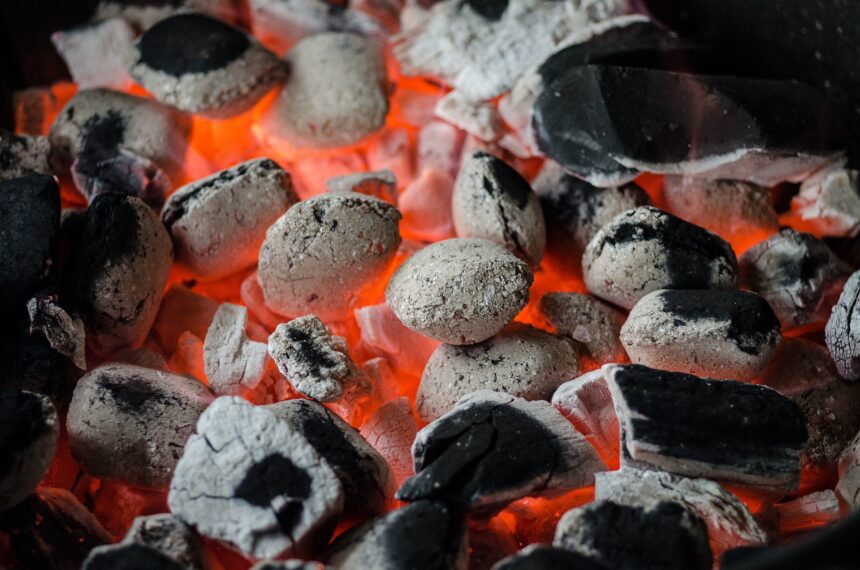Image by Rudy and Peter Skitterians from Pixabay
Charcoal, an essential element in various sectors, is a versatile substance that has been around for centuries. From being a vital component in the culinary world to its use in industrial processes, charcoal’s importance can’t be overstated. However, the underlying science and processes involved in its production remain a mystery to many. This article examines the intricacies of charcoal production, its different types, and its usage, offering an in-depth understanding of this versatile material.
Understanding Charcoal
Charcoal, in essence, is a product of pyrolysis, a process that involves heating wood or other organic materials in a low oxygen environment. Pyrolysis is an exothermic process, which means it generates heat once it begins. The process removes volatile elements such as water, methane, hydrogen, and tar from the material, leaving behind black lumps and powder, about 25% of the original weight. This is the charcoal we know and use.
Charcoal, when ignited, combines with oxygen to form carbon dioxide, carbon monoxide, water, other gases, and significant quantities of energy. It has more potential energy per ounce than raw wood, burns steadily, produces less smoke, and emits fewer dangerous vapors.
The History of Charcoal Production
Charcoal production dates back about 30,000 years, as evident from archaeological findings. Charcoal’s ability to burn hotter, cleaner, and more evenly than wood made it a preferred choice for early smelters and blacksmiths. The production process was first done in pits covered with dirt by specialized craftsmen known as colliers. In today’s modern world, charcoal production has evolved to be more environmentally friendly and efficient, with the process taking place in large concrete or steel silos with minimal oxygen.
Types of Charcoal
Charcoal comes in various forms, each with its unique characteristics and uses. The most common types are lump charcoal and charcoal briquettes.
Lump Charcoal
Lump charcoal is essentially the product of burning wood pieces in an oxygen-starved environment until all the volatile compounds are removed. The result is lumps of pure carbon that are irregular in size. Lump charcoal is favored for its ability to burn hot and produce minimal ash. However, it burns out more quickly than briquettes and can vary in heat output and flavor.
Charcoal Briquettes
Charcoal briquettes, on the other hand, are made from a mixture of charcoal dust, small pieces of charcoal, and some binder to hold everything together. Each briquette is the same size and shape, which makes it easier to control the temperature and cook food evenly. Briquettes burn longer than lump charcoal but produce more ash.
Making Charcoal at Home
Making charcoal at home can be a rewarding process, both in terms of the satisfaction it brings and the high-quality charcoal produced. The process involves preparing a kiln, placing logs strategically for optimal burn, lighting the kiln, and allowing the wood to smolder until it turns into charcoal. The process can take days but the result is worth the wait.
Charcoal and the Environment
While charcoal production does release some pollutants into the atmosphere, it’s worth noting that the process uses a renewable energy source – trees. Additionally, advancements in charcoal production technology aim to minimize environmental impact, making it a more sustainable choice compared to non-renewable energy sources.
Choosing the Best Charcoal for Grilling
When it comes to grilling, the type of charcoal used can significantly impact the flavor and cooking time of the food. Charcoal made from hardwoods like hickory, oak, and beech tend to burn hotter and impart a distinct flavor to the food. On the other hand, charcoal made from coconut shells, nutshells, or other organic materials may impart a unique flavor but may not burn as hot or long.


